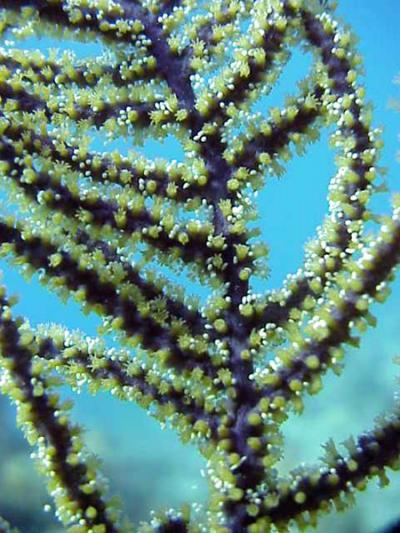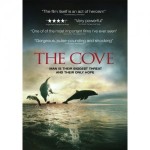
You might be surprised to learn that an ingredient in some skin crèmes is coral, or more accurately coral extract. More specifically, Pseudopterosin A is a topical anti-inflammatory agent derived from the sea whip Pseudopterogorgia elisabethae and often included in beauty products. P. elisabethae from the Bahamas possess higher concentrations of pseudopterosins than populations elsewhere. As expected, workers in Bahamas prune branches from large corals to obtain pseudopterosins.
The pruning, as opposed to completely harvesting, is thought to leave a still healthy population of corals behind, ready to be pruned later. After prunings in 2002 and 2005 and before the annual spawning, Christopher Page and Howard Lasker examined 24 pruned corals and 20 unpruned corals. What the researchers found is that although colonies appeared healthy pruned corals produced less eggs.
In pruned female colonies only 1 of 3 coral polyps carried no eggs. In untouched female colonies only 1 of 6 polyps possessed no eggs. This combined with double the number of female polyps producing over 3 eggs in unpruned versus pruned, means much more reproductive power amongst untouched corals. Among unpruned male colonies, 75% contained 11 or more sperm producing organs; however, among pruned male colonies only 60% had over 11 sperm producing organs.
Why would pruned corals produce less eggs and sperm? When organisms are injured more energy is diverted away from reproduction and toward repair. Interestingly, this pruning may actually also be creating artificial selection. If workers are targeting larger and fuller corals to prune, then smaller less thick corals will be reproducing more and eventually become more dominant.
So although you may get more sex by rubbing coral on your face, the corals won’t be so lucky.
Christopher A. Page, Howard R. Lasker. Effects of tissue loss, age and size on fecundity in the octocoral Pseudopterogorgia elisabethae. Journal of Experimental Marine Biology and Ecology, 2012; 434-435: 47 DOI:10.1016/j.jembe.2012.07.022






So wait, does that make skin crème an ecosystem service?
I’m amazed that they’re not using genetic engineering to just get yeast to produce this chemical in 2012…..
You can eventually use genetic when you know which genes or genes clusters are involved in the synthesis. Corals and other marine organisms are well studied by chemists, but often the compounds described are possibly chemically synthetised or copied, but the original organism or consortium of organisms stay unknown.
Yeast would not be the best bug into which introduce the gene cluster, several bacteria are excellent model for this.